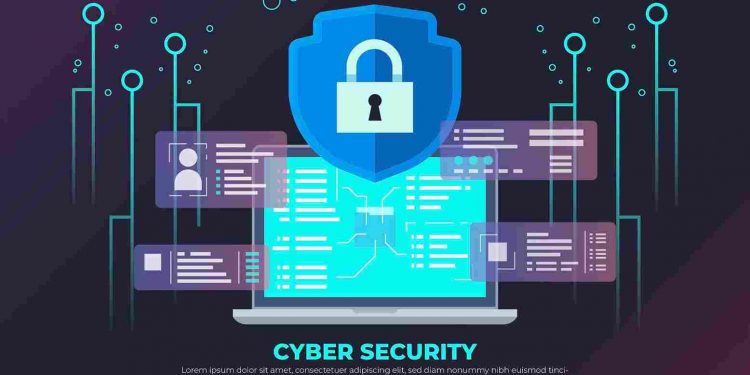What Are Security Technologies?
Security technologies refer to the various tools and methods used to protect computer systems, networks, and sensitive data from unauthorized access, theft, or damage. These technologies include firewalls, encryption, anti-virus software, intrusion detection and prevention systems, and biometric authentication systems, among others.
As cyber threats continue to evolve and become more sophisticated, the importance of security technologies to the future of cybersecurity cannot be overstated. The development of artificial intelligence (AI) and machine learning (ML) algorithms is expected to revolutionize the cybersecurity market, enabling faster and more accurate threat detection, response, and reporting efforts.
Additionally, blockchain technology is being explored as a means of enhancing data security and preventing cyber attacks. The integration of these and other emerging technologies will play a crucial role in shaping the future of cybersecurity.
Security Technology Trends in 2023
Here are some of the security technologies and paradigms that are likely to grow in 2023.
Software Bill of Materials (SBOM)
A software bill of materials is a detailed inventory of all the software components that make up a particular application or system. It provides information about the versions, dependencies, and known vulnerabilities of each component, allowing organizations to identify and address potential security risks.
The adoption of SBOMs is becoming a trend due to the increasing complexity of software supply chains and the growing number of cyber threats. SBOMs provide greater transparency and visibility into the software supply chain, allowing organizations to better manage their software assets and make informed decisions about risk management. The US government has also recently issued an executive order mandating the use of SBOMs in federal acquisitions, further driving the trend toward SBOM adoption.
Dynamic Application Security Testing (DAST)
Dynamic application security testing (DAST) is a method of security testing that simulates an attacker attempting to exploit vulnerabilities in a running application. DAST tools scan the application to identify security weaknesses and generate a report detailing the findings. This approach is different from SAST (Static Application Security Testing), which analyzes source code before the application is compiled and executed.
DAST is gaining popularity in the software development industry because of its ability to test for vulnerabilities in real-time and detect issues that might not be identified by other testing methods. As applications become more complex and development cycles become shorter, DAST provides a way for organizations to quickly and efficiently test their applications for vulnerabilities. dynamic application security testing tools can be integrated into the development process to provide ongoing security testing throughout the software development lifecycle.
In addition, DAST can be used to test web and mobile applications, making it an ideal choice for organizations that develop these types of applications. By identifying and remediating vulnerabilities during development, organizations can reduce the risk of a security breach and protect their sensitive data.
Extended Detection and Response (XDR)
XDR stands for eXtended Detection and Response. It is a security solution that unifies and consolidates data from multiple security products, such as endpoint detection and response (EDR), network detection and response (NDR), and cloud security posture management (CSPM), among others. XDR enables security teams to detect, investigate, and respond to threats more effectively by providing a comprehensive view of the organization’s security posture.
XDR is popular in the cybersecurity industry because it addresses the limitations of traditional security solutions, which often operate in silos and provide a fragmented view of the organization’s security posture. By integrating data from multiple sources, XDR provides a more holistic and contextualized view of security events, enabling security teams to respond more effectively to threats. As cyber threats continue to evolve and become more sophisticated, the need for comprehensive and integrated security solutions like XDR is expected to increase.
Secure Access Service Edge (SASE)
Secure access service edge (SASE) refers to a security model that integrates networking and security functions into a cloud-based service. SASE combines SD-WAN (software-defined wide area networking) capabilities with security features such as a secure web gateway, zero-trust network access, and firewall as a service. It secures access to corporate data and applications from any physical location, via any endpoint device, while also protecting against threats.
SASE addresses the challenges posed by the rapid adoption of cloud services and the increasing number of remote workers. Traditional security solutions designed for a perimeter-based network architecture are no longer sufficient in a cloud-first, mobile-first world.
SASE provides a comprehensive and scalable solution that enables organizations to protect their data and applications in a flexible and cost-effective manner. As more organizations move towards cloud-based services and remote work, the adoption of SASE is expected to increase.
Cloud Security Posture Management (CSPM)
Cloud Security Posture Management (CSPM) refers to the process of monitoring and ensuring the security of cloud resources, including configuration and compliance, throughout their lifecycle. CSPM tools scan cloud environments for misconfigurations, compliance violations, and other security risks, and provide recommendations for remediation.
CSPM is becoming increasingly important in the cybersecurity industry due to the growing adoption of cloud services and the increasing complexity of cloud environments. The shared responsibility model of cloud security requires customers to ensure the security of their own data and applications in the cloud.
CSPM provides a centralized view of cloud security posture and helps organizations ensure that their cloud resources are configured securely and compliant with regulations and industry best practices. As more organizations move to the cloud, the demand for CSPM tools is expected to increase.
Kubernetes Security Posture Management (KSPM)
Kubernetes Security Posture Management (KSPM) is a security solution designed to provide visibility, compliance, and remediation for Kubernetes environments. KSPM tools scan Kubernetes clusters for misconfigurations, vulnerabilities, and compliance violations and provide recommendations for remediation. It can also enforce security policies and standards, monitor security events, and provide reporting and auditing capabilities.
KSPM is a growing trend due to the rapid adoption of Kubernetes and the need to secure containerized applications. Kubernetes provides many security features, but it also introduces new security challenges, such as container runtime security and pod-to-pod communication.
KSPM provides a centralized view of Kubernetes security posture and helps organizations ensure that their Kubernetes clusters are configured in a secure and compliant manner. As more organizations adopt Kubernetes and containerization, the demand for KSPM tools is expected to increase.
Conclusion
As we move into 2023, the world of cybersecurity continues to evolve and adapt to the changing threat landscape. New technologies and tools are emerging to help organizations stay ahead of cyber threats, improve their security posture, and protect their critical assets. Among these emerging trends are software bill of materials (SBOM), dynamic application security testing (DAST), extended detection and response (XDR), cloud security posture management (CSPM), and Kubernetes security posture management (KSPM).
These trends represent a shift towards more integrated and comprehensive security solutions that can provide better visibility, more effective threat detection, and streamlined incident response. By adopting these security technologies, organizations can improve their security posture and better protect against cyber attacks. As the cybersecurity landscape continues to evolve, it is essential to stay up-to-date on the latest security trends and embrace new technologies to stay ahead of the threats.
——————–
Author Bio: Gilad David Maayan
Gilad David Maayan is a technology writer who has worked with over 150 technology companies including SAP, Imperva, Samsung NEXT, NetApp, and Check Point, producing technical and thought leadership content that elucidates technical solutions for developers and IT leadership. Today he heads Agile SEO, the leading marketing agency in the technology industry.
LinkedIn: https://www.linkedin.com/in/giladdavidmaayan/
Follow Techdee for more!





